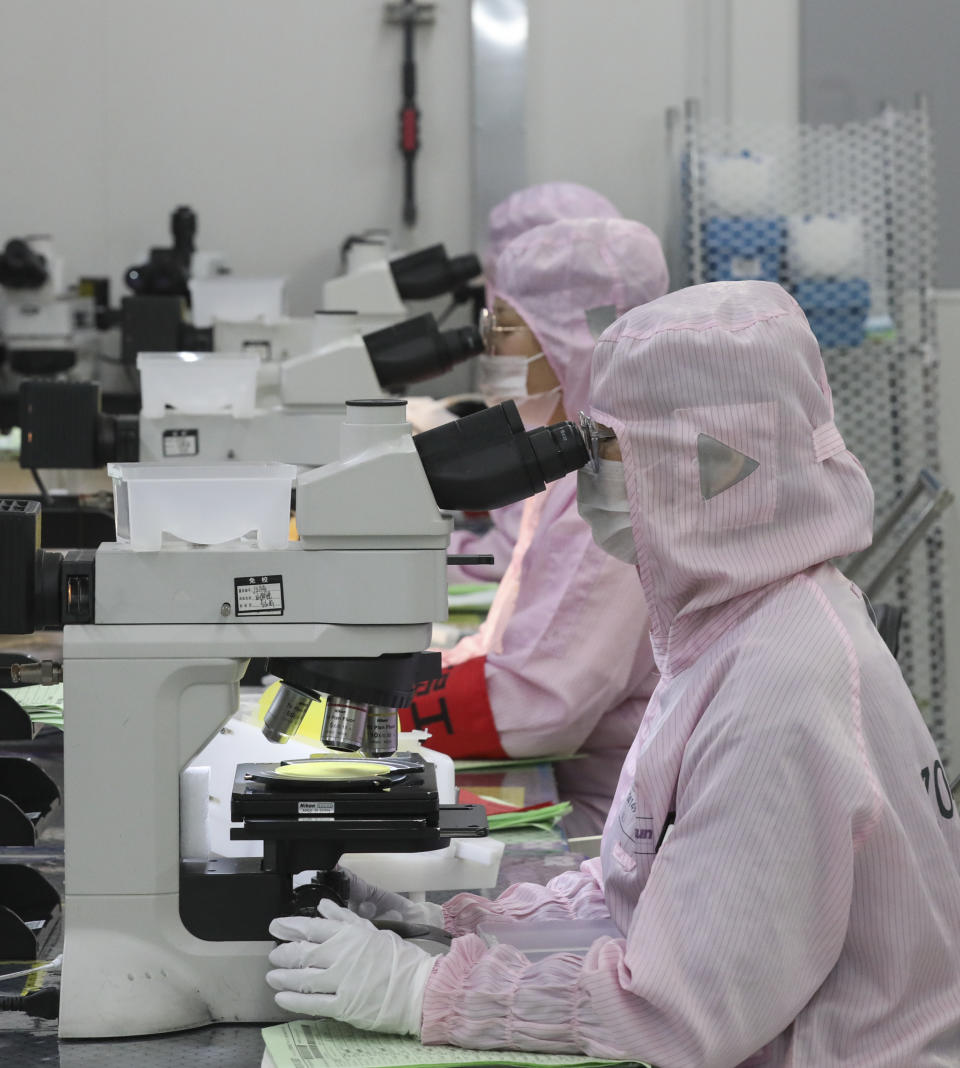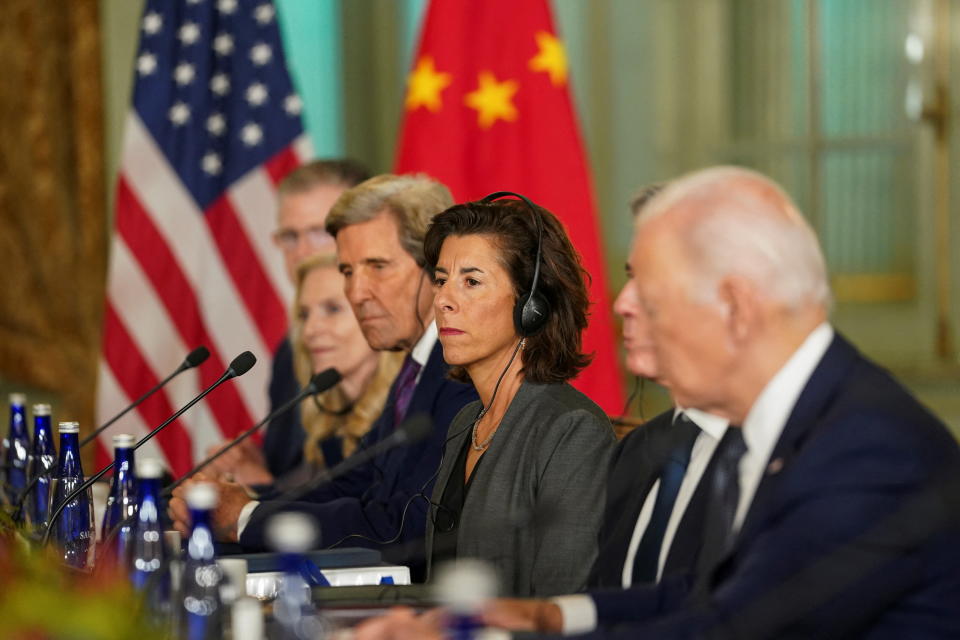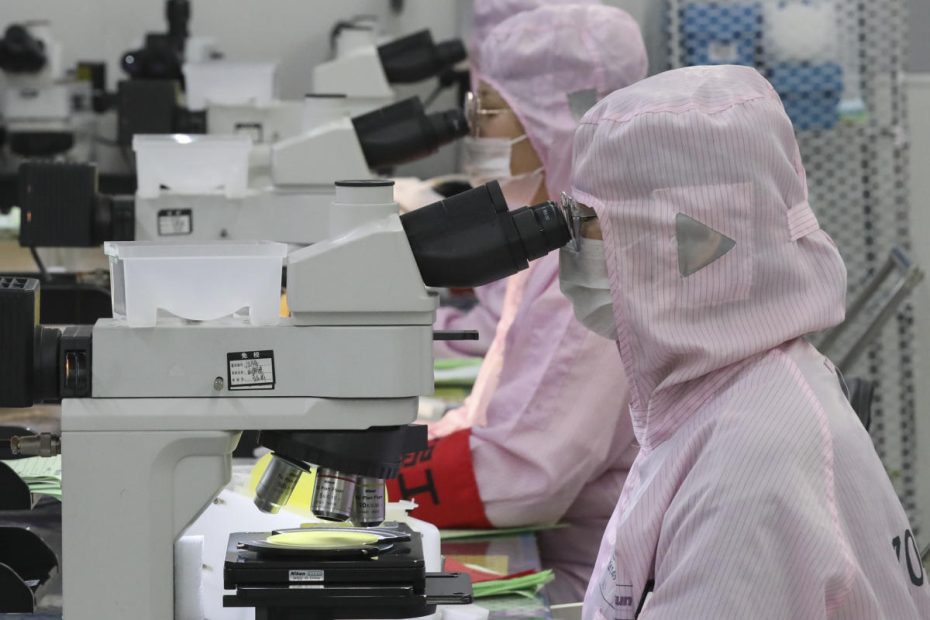Since 2022, the U.S. has been hyper-focused on curbing China’s production of high-end semiconductors. The Commerce Department has imposed stifling export controls and allocated tens of billions of dollars to boost advanced chip manufacturing in the U.S.
In response, China has forged its own policy — focusing heavily on less advanced but widely used “legacy” chips. New data shows Beijing is quickly gaining influence in that market.
China is now on track to install three times as much chip manufacturing capacity this year as all other countries plan to do in the next three years combined, according to Silverado Policy Accelerator, a nonprofit think tank. The country is poised to control about 40% of total legacy chip production by 2027, according to a study by the Rhodium Group.
“What China is doing in that market segment is what it has done in many other industries,” Silverado CEO Sarah Stewart told Yahoo Finance. “They are filling that market segment with … below-market loans [and] all kinds of subsidies that are not offered by anyone else. None of it is linked to a real demand signal.”
China's efforts have raised fears that the semiconductor industry will follow the lead of the solar and steel industries, where overcapacity has contributed to a collapse in global prices.
Price pressure is already building. Silverado’s report found that Chinese companies offered prices 20% to 30% below their non-Chinese peers in 2022 and 2023. Those discounts came despite strong industrial prices, particularly in 2022, when a broad semiconductor shortage led to record sales.
According to consultancy JW Insights, Chinese chips are still largely used to supply the domestic market, but heavy discounts have allowed companies such as Semiconductor Manufacturing International Corporation (SMIC), Hua Hong (1347.HK) and Nexchip (688249.SS) to take market share from non-Chinese competitors including GlobalFoundries (GFS) and Samsung.
China accounted for about a third of global legacy chip production last year, nearly double the 2015 figure, according to Rhodium Group. That capacity is expected to grow to 39% by 2027.
New versus old
While advanced chips represent the most advanced technology, their use relies on a foundation built on older semiconductors.
The Commerce Department defines these legacy chips as semiconductors built at nodes that are 28 nanometers or larger. They are considered fundamental because they are critical to almost every electrical device, from smartphones to home appliances, medical equipment and military vehicles.
For example, a smartphone uses 160 to 170 chips, but according to Silverado's research, only three are considered advanced. GPS, Wi-Fi, battery life and camera controls are just a few of the features that rely on older chips.
“There's almost no application that requires an advanced chip that can operate without a fundamental set of chips,” Stewart said. “They go hand in hand.”
Still, Biden officials have focused their efforts on producing advanced chips rather than older chips, largely because China lags far behind in that area.
The Commerce Department announced a combined $3.4 billion investment to expand U.S. capacity for manufacturing legacy chips, according to official data. That’s a third of the incentives allocated for advanced semiconductors.
National security is one reason for the emphasis on denying China advanced chips. Commerce Secretary Gina Raimondo has said the administration’s export controls are aimed at thwarting Chinese advances in artificial intelligence, military systems and mass surveillance.
“Supercomputers, AI technology, and AI chips in the wrong hands are as deadly as any weapon we could deliver,” Raimondo said last year at the Reagan National Defense Forum.
China increases production
China has been seeking to expand its domestic semiconductor industry for years, investing billions of dollars in domestic players.
The current acceleration can be traced back to 2019, when the Commerce Department placed telecom giant Huawei on its Entity List, cutting off access overnight to major vendors including Google (GOOG), Qualcomm (QCOM) and Broadcom (AVGO).
The 2022 export controls, which virtually banned U.S. companies from supplying advanced chips and advanced chip-making equipment to China, have only strengthened the country's efforts.


According to Stewart, China took advantage of Washington's policies by ramping up production of older chips in an effort to increase its global market share, gain leverage over the U.S. and control prices.
At the heart of the effort is China's National Integrated Circuits Industry Development Investment Fund, which has raised $52 billion to develop semiconductor manufacturing and design over 10 years with a focus on older chips, according to a report from the Semiconductor Industry Association and BCG. It aims to raise another $40 billion by the end of the decade.
The industry has also expanded on the backs of Western companies. China was the largest global importer of semiconductor manufacturing equipment in 2023, importing $15 billion more than its nearest rival, Taiwan, Silverado said.
Renewed fears over old chips
China's increased manufacturing capacity has raised alarm bells among policymakers and industry leaders.
This month, California lawmakers signed a letter urging the Commerce Department to end unilateral export controls, saying further controls could “push legacy U.S. companies into a death spiral.”
Some, including Intel CEO Pat Gelsinger, have warned of the consequences of extensive export restrictions, arguing that too many restrictions could accelerate China’s chip production schedule.
“If that limit is too restrictive, then China should start making its own chips,” he said during his speech at Computex in Taiwan.


Earlier this year, the Commerce Department launched an investigation into the country's supply chains to better understand how U.S. companies source their commodity chips.
And a few months ago, the Department of Defense imposed its own procurement restrictions on government agencies, banning them from using chips made in China starting in 2027. The National Defense Authorization Act also banned transactions with entities that use Chinese chips in critical defense and intelligence system products.
The European Commission has also taken note of this and has been interviewing companies to better understand how Chinese companies are using older chips to undermine their businesses, according to several reports.
Countering China's semiconductor ambitions will ultimately require additional policy support and cooperation among U.S. allies, according to Reva Goujon, a director at Rhodium Group.
“The US needs to effectively create an ex-China market for chips to ensure demand among the US and trusted partners,” Goujon said. “The sustainability of the AI boom is a key variable, as are the US elections. Either a Harris administration continues that plurilateral momentum, or we see further fractures and leaky controls from a Trump 2.0 polarization of partners.”
Click here for the latest technology news that will impact the stock market
Read the latest financial and business news from Yahoo Finance

